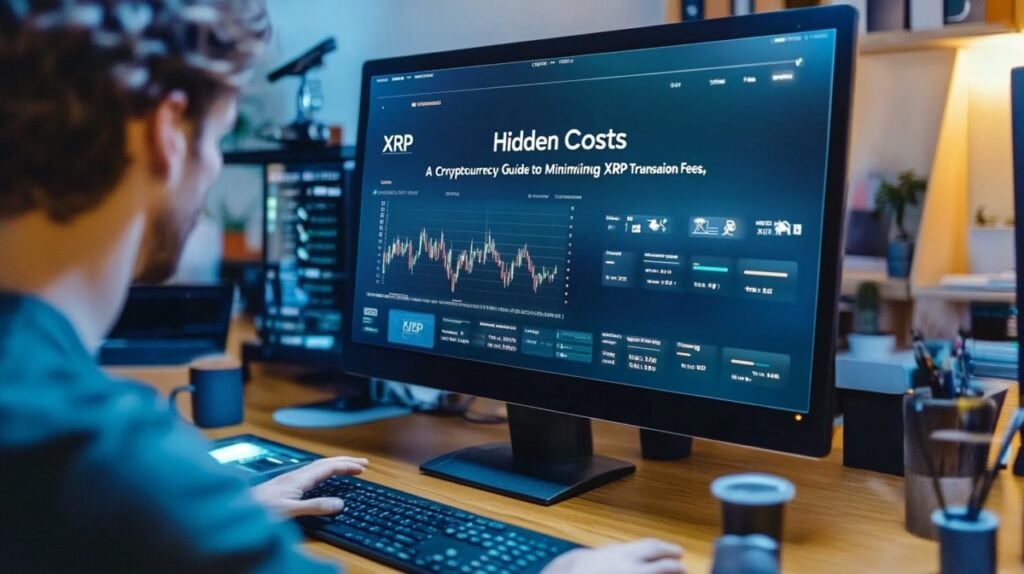The cryptocurrency market’s transaction costs significantly impact trading profitability, with fees varying from 0.1% to 4% across major exchanges. Recent analysis shows traders lose an average of 2.1% of their investment value to hidden charges and spreads. For those looking to buy XRP with the lowest fee, understanding these costs becomes crucial, as platform selection can save up to 80% on transaction expenses. Modern exchanges offer competitive rates, with some reducing fees below 0.05% for high-volume traders.
Common hidden costs in crypto trading
The cryptocurrency trading landscape contains numerous concealed expenses that can significantly impact trading profitability. Exchange markup fees often appear as slight price differences between platforms, creating an invisible cost layer during each transaction. Platform maintenance costs may seem minimal at first but accumulate significantly over time, especially for active traders.
Network congestion charges fluctuate based on blockchain activity, often spiking during high-traffic periods without warning. Currency conversion costs become particularly relevant when moving between different cryptocurrencies or fiat currencies, as each conversion includes both explicit and implicit fees. Account management fees vary between platforms and may include unexpected charges for services that were initially presented as free.
These hidden costs become most apparent during periods of market volatility when traders need to move quickly between positions. For instance, during rapid market movements, higher network congestion fees combine with wider spreads, substantially increasing the real cost of each trade.
Understanding XRP advantages for trading
XRP distinguishes itself in the cryptocurrency ecosystem through its unique approach to transaction processing and cost management. Unlike traditional blockchain networks that require mining, XRP’s consensus mechanism enables rapid transaction verification without the associated energy costs. This fundamental difference translates into consistently lower operational expenses for traders.
The network’s design prioritizes speed and efficiency, completing transactions in seconds rather than minutes or hours. This quick settlement time reduces exposure to market volatility during transfers, effectively lowering the hidden costs associated with price fluctuations during transaction processing. The built-in currency exchange capabilities further streamline cross-border transactions, eliminating the need for multiple conversion steps that each incur their own fees.
Most significantly, XRP’s high liquidity in major markets ensures that traders can execute large transactions without significant price impact. This market depth helps maintain stable trading costs even during periods of heightened activity, providing a more predictable fee structure for professional traders.
XRP-specific transaction costs
The XRP network implements a sophisticated fee structure designed to balance accessibility with network security. At its core, the base transaction fee serves as a spam prevention mechanism rather than a revenue generation tool. This fee automatically adjusts based on network load, though it typically remains remarkably low compared to other cryptocurrencies.
- Base network fees maintaining stability
- Minimum account reserve requirements
- Institutional node operation costs
- Multi-signature wallet security expenses
- Smart contract deployment charges
Understanding these cost components allows traders to better plan their operations and maintain optimal liquidity levels. The network’s design ensures that while individual transaction costs remain minimal, the cumulative effect of these security measures maintains network integrity without placing undue burden on legitimate traders.

Exchange-related fees when trading XRP
Exchange platforms implement various fee structures when handling XRP transactions, each designed to address specific aspects of trading operations. Trading fees typically follow a maker-taker model, where market makers receive preferential rates compared to market takers. This structure encourages liquidity provision while maintaining market efficiency.
Withdrawal mechanisms involve complex interactions between exchange platforms and the XRP network, necessitating careful fee calculation to cover operational costs while remaining competitive. deposit methods vary significantly, with each option carrying its own fee implications based on processing requirements and associated risks.
Platform-specific charges often reflect the unique services offered by each exchange, though these can significantly impact overall trading costs. For instance, advanced trading features, enhanced security measures, or premium support services may incur additional fees that traders need to factor into their strategies.
Strategic approaches to minimize costs
Effective cost management in XRP trading requires a well-planned approach that considers multiple factors influencing transaction expenses. Market timing plays a crucial role in minimizing costs, as network congestion and trading volume fluctuations directly impact fee levels throughout the day. Traders who understand these patterns can significantly reduce their operational expenses.
Platform selection represents another critical aspect of cost management. Different exchanges offer varying fee structures, and understanding these differences enables traders to optimize their trading strategies. Some platforms provide incentive programs for high-volume traders, offering substantial fee reductions that can significantly impact long-term profitability.
“Smart trading isn’t just about making profitable trades – it’s about keeping more of what you earn through strategic cost management”
Trading volume consolidation has emerged as a powerful strategy for cost reduction. By concentrating trading activity on specific platforms rather than spreading it across multiple exchanges, traders can more easily qualify for volume-based discounts and premium membership benefits. This approach requires careful balance between platform dependency risks and cost optimization benefits.
Advanced cost reduction techniques
Professional traders employ sophisticated methods to minimize their trading expenses while maintaining operational efficiency. Batch processing has become increasingly popular among experienced traders, allowing them to combine multiple transactions into single operations and thereby reduce the overall fee burden.
Cross-exchange arbitrage opportunities often arise from fee differentials between platforms, though capitalizing on these opportunities requires careful consideration of total transaction costs. Network congestion monitoring tools help traders identify optimal times for executing transactions, particularly for large-volume trades that could otherwise incur significant fees.
Fee structure optimization involves regular review and adjustment of trading patterns to maximize fee rebates and minimize transaction costs. This process includes:
- Analyzing historical fee patterns
- Evaluating platform-specific incentives
- Monitoring network congestion trends
- Optimizing transaction timing
- Implementing batch processing strategies
These advanced techniques, when properly implemented, can result in substantial cost savings over time. Many successful traders report reducing their total fee expenditure by 30-50% through careful application of these methods.
Conclusion
Understanding and managing hidden costs in cryptocurrency trading, particularly when dealing with XRP, requires ongoing attention and strategic planning. The complex interplay between network fees, exchange charges, and market conditions creates both challenges and opportunities for cost-conscious traders.
Caroline is doing her graduation in IT from the University of South California but keens to work as a freelance blogger. She loves to write on the latest information about IoT, technology, and business. She has innovative ideas and shares her experience with her readers.






